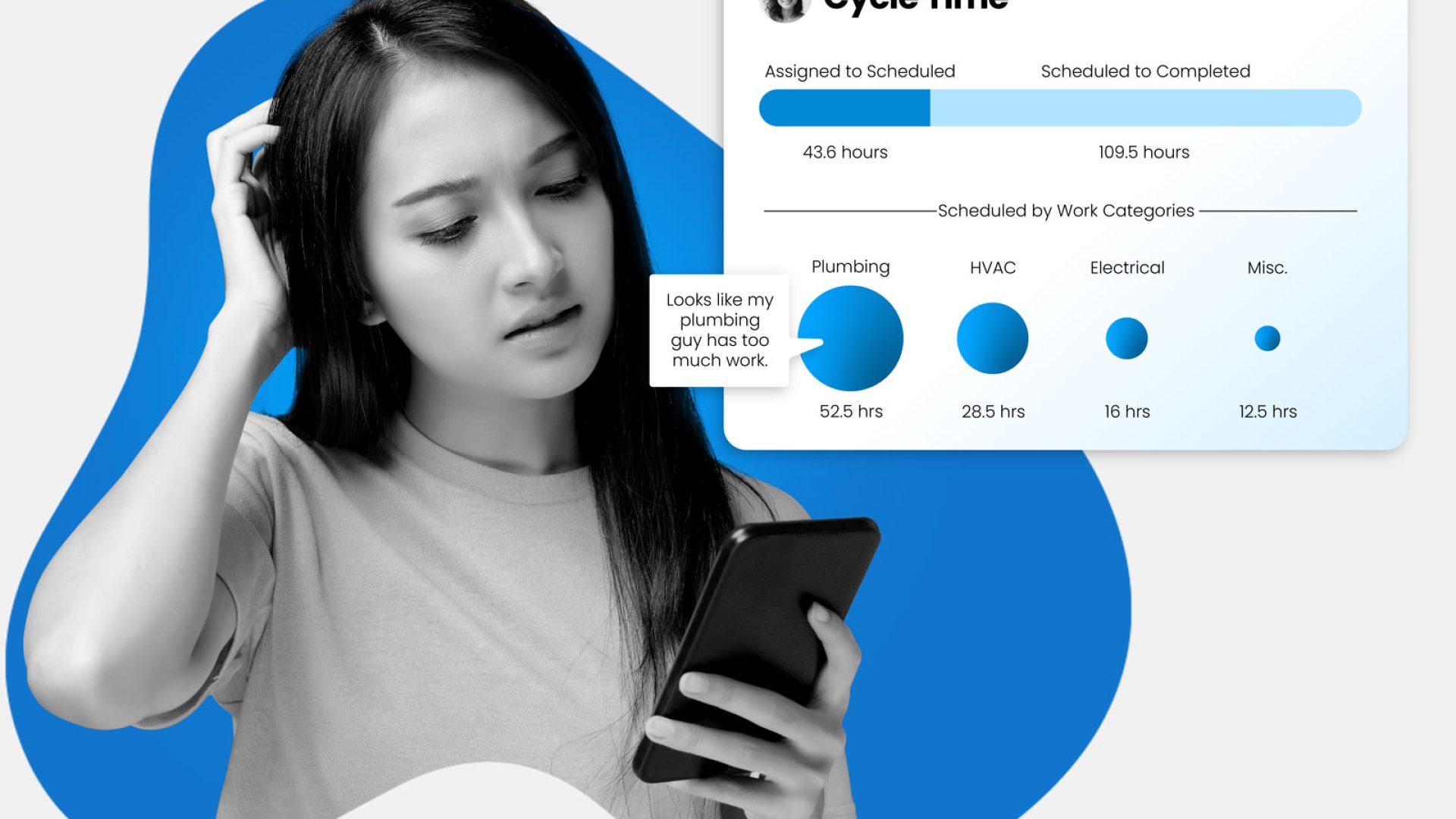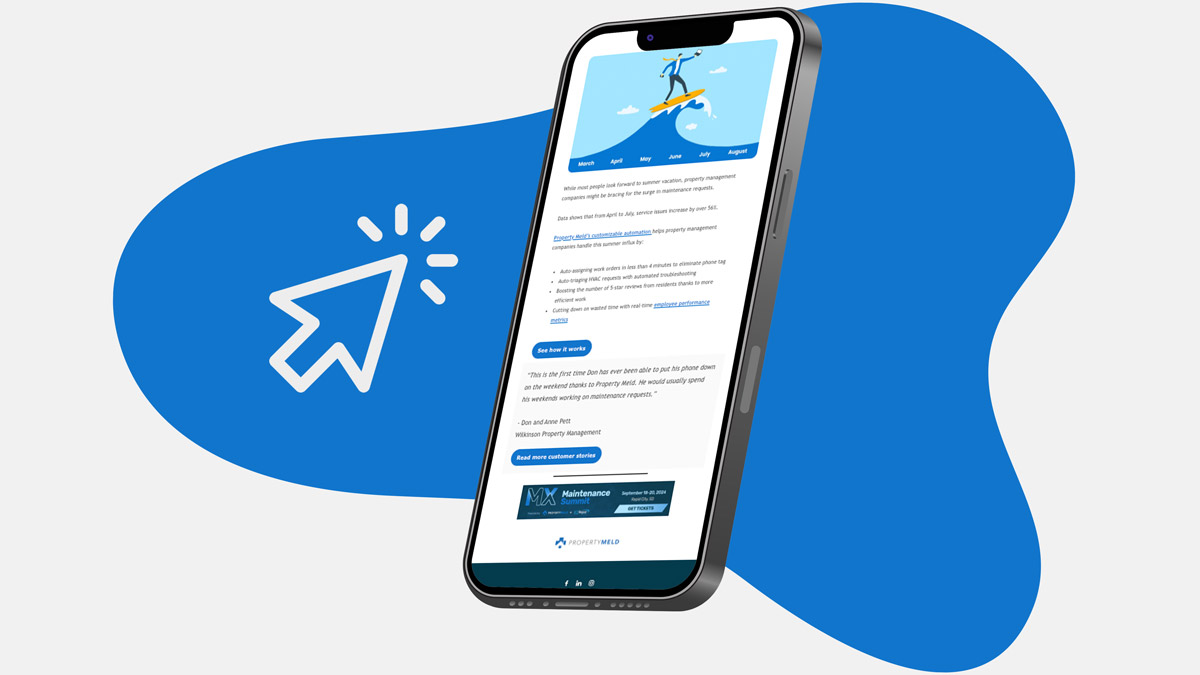Some businesses define success as ever-increasing revenues and profits. Yet this simple definition comes with a catch: revenue and profits are lagging indicators, meaning that you’re already feeling the heat by the time you notice something is awry.
Enter the concept of key performance indicators (KPIs). KPIs, help you measure how various successful aspects of your business or operation perform in real-time. This allows you to get ahead of problems before they negatively impact your company’s bottom line. When it comes to assessing the health of a property management maintenance operation, KPIs are beneficial.
Leading vs. Lagging Indicators
First, let’s try out an example. Say you’re cruising along the highway, and suddenly, red-and-blue flashing lights pop up in your rearview mirror. Twenty minutes later, you’re holding a speeding ticket. That ticket is a KPI of your driving. But, it’s a lagging indicator, meaning it measures your poor driving performance after it has already occurred and the problem has already presented itself.
In business, using profits and revenue as KPIs is like using a speeding ticket to measure your driving. While profits and revenue are crucial measurements of the performance of your business, they serve more as a broad signal that something else in your operation is awry.
Now, consider the alternative. You’re driving along a winding country road when you glance down at your speedometer and notice you’re speeding 10 miles per hour over the speed limit. Naturally, you slow down. The speedometer just served as a KPI, but it’s a leading indicator in this case.
In other words, it measures your driving performance as it occurs, identifies the problem — you’re speed — and gets ahead of the issue before you’re stuck with a speeding ticket or in business, lagging revenues, and profits.
It is better to measure for leading indicators than lagging indicators when deciding what types of KPIs you should measure in your property management maintenance operation. But where do you start?
Here are some property management KPI examples:
Leading KPIs
1. Resident Retention
Happy residents are less likely to move, reducing resident turnover, vacancy rates, and staff work to fill empty units. In other words, the more comfortable your residents are, the more money and less work your company has to do.
As a result, the resident turnover rate is an excellent example of a KPI leading indicator in the property management business.
It’s logical to assume that your profits and revenue will suffer if your resident turnover rate is high. But, with the insight that your company has an abnormally high resident turnover rate, you can address the issue immediately. But how do you get ahead of this leading indicator?
2. Time of Repair
One of the best ways to create happy residents is to fix maintenance issues quickly and effectively. According to our data, 46% of residents said that maintenance issues factored into their decision to leave. Even more interesting, but not surprising, is 31% of residents reported that maintenance issues were the primary reason they left a property.
With our data, we developed a data-based guideline for how long your company has to repair each type of maintenance issue before your chances of a happy resident drop off considerably.
- HVAC repairs: 3.5 days or less
- Plumbing repairs: 4.5 days or less
- Electrical: 5 days or less
According to our analysis, if a maintenance issue takes longer than 5.5 days to fix, you have close to zero chance of receiving a positive review.
Measuring the speed of a repair job is essential as it’s directly related to resident satisfaction, the ultimate measure of how your maintenance process is working.
By tracking how long each repair takes and the resident satisfaction level, you can understand how long you have for each type of job before the resident experience turns sour.
Lagging KPIs
1. Online Reviews
We’ve said it before, but it’s worth repeating: online reviews are currency in today’s digital world. In one study, 78% of prospective residents said a property management company’s online reviews were the most significant factor in choosing where to live, with that figure rising to 86% for millennials.
The primary reason for negative reviews in the property management industry is maintenance issues. So, if you want to preserve your company’s online reputation, it’s wise to start building a consistent, checkpoint-oriented maintenance process. Though it’s a lagging indicator, the satisfaction level of your residents is so intricately connected to other KPIs that it’s worth keeping an eye on.
Of course, you can also craft your system outside of online reviews to track resident satisfaction. If you choose this route, avoid the pitfall of selective surveying. The goal is to accurately understand how your maintenance program operates and where the issues may lie. Selective surveying may help you intercept some problems but will devalue the quality of your data.
Instead, survey every resident that has interacted with your maintenance crew/operation. This ensures there are no barriers to entry to report their experience.
When companies report their quarterly and annual performance, revenue and profits typically attract the most attention. But those figures only tell one part of the story: the end. By using KPIs, you can gain deeper insight into the inner workings of your business, identify and get ahead of problem areas, and ensure the story’s ending is a happy one.
Request a demo to learn how to achieve your property maintenance-related KPIs with Property Meld!






